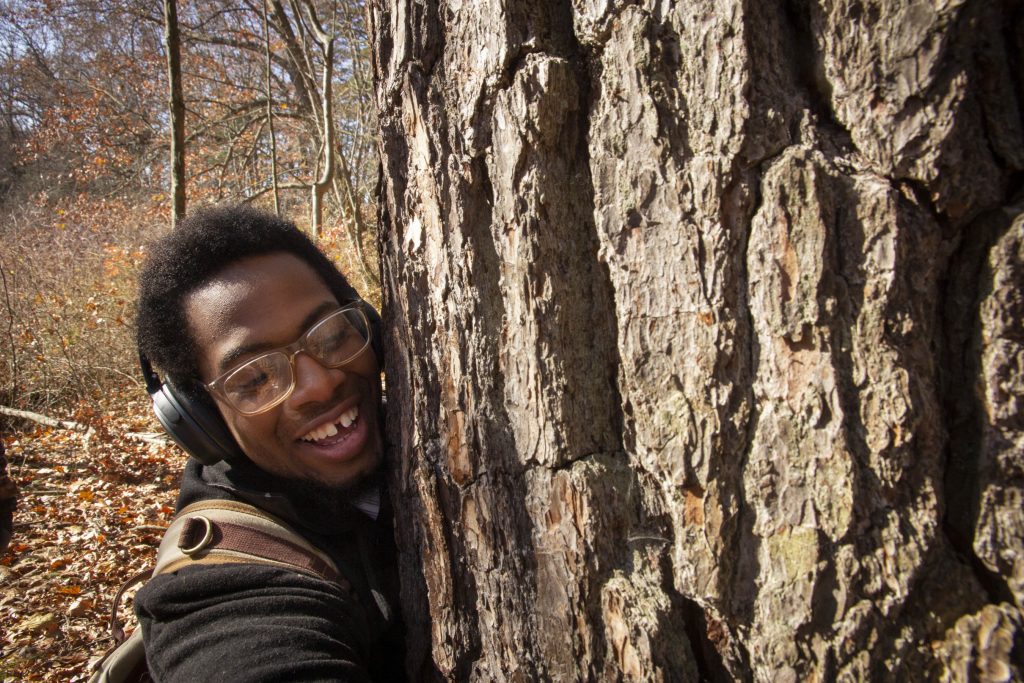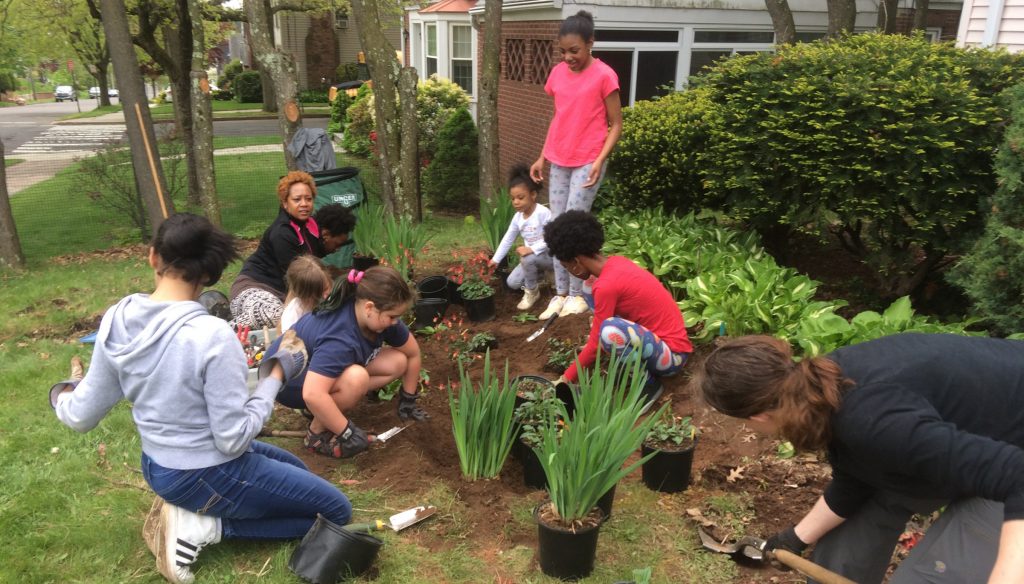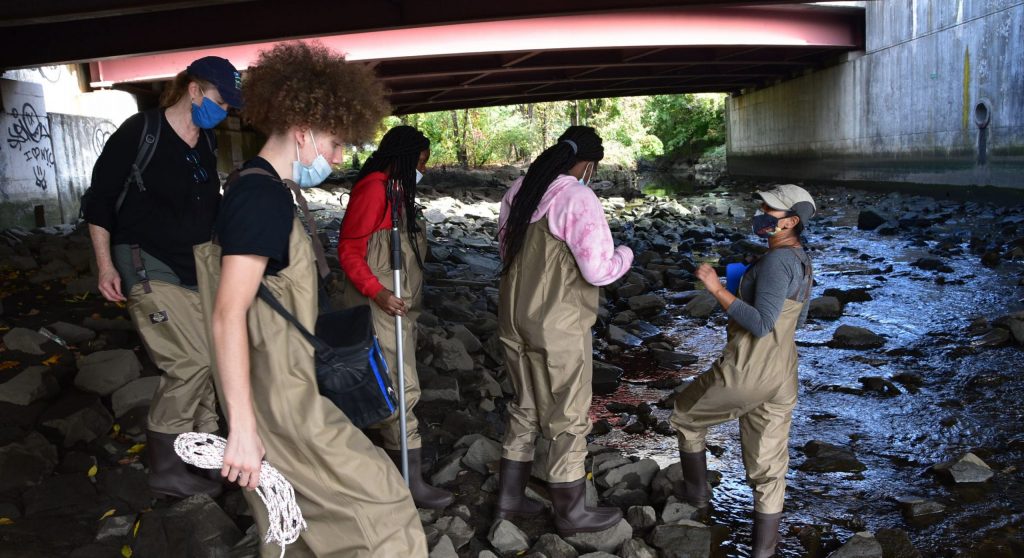A message from Curt Johnson, president of Save the Sound:
Last spring, Save the Sound issued a strong statement in solidarity with Black Lives Matter. It’s time to report on Save the Sound’s diversity, equity, and inclusion journey as well as our evolving environmental justice and equity work.
Our diversity, equity, and inclusion (DEI) committee has re-engaged and meets regularly. Meetings often attract the majority of our staff as well as key board leaders. In addition, this broad sweep of staff and board have engaged in regular learning lunches, discussing and reflecting on articles and videos that dive into white privilege, environmental justice, and our nation’s 400-year legacy of racial oppression.
We dedicated two recent DEI committee meetings to self-reflect on where Save the Sound is on the continuum of becoming an anti-racist organization. We held small break-out discussions using the guide prepared by Crossroads Ministry, “Continuum on Becoming an Anti-Racist, and Multi-Cultural Institution.” The overall consensus: Save the Sound is a multi-cultural institution moving toward an anti-racist one. The continuum suggests some next steps in this journey: We can reach full board and staff agreement in identifying ourselves as an anti-racist institution and include this proclamation in an updated values statement. We can increasingly design our work to be influenced, guided and held to account by voices from oppressed, environmental justice communities. We can deepen a common objective of recognizing and eliminating racism and unfairly-granted white advantage.
An inclusive culture is critical to anti-racism. We are currently assessing our internal staff culture, as well as multiple facets of our existing diversity, using an expert consultancy tool called CultureAmp. This confidential survey will be completed and analyzed this fall.
We are fortunate to be filling six positions this fall, creating a great opportunity to attract more outstanding people of color to our organization. Our DEI hiring working group is pulling together contacts and postings at diverse institutions, and has created a job posting practice focusing on core skills as opposed to hard and fast requirements for advanced degrees.
Current Examples of Environmental Equity Work
One definition of environmental equity (this one used by the State of Connecticut) is a start: “No segment of the population should, because of its racial, ethnic, or economic makeup, bear a disproportionate share of the risks and consequences of environmental pollution or be denied equal access to environmental benefits.”
Below are three examples of Save the Sound’s current work to further this environmental equity goal:
Protecting Endangered Lands – Hamden, CT
A year ago, Save the Sound was approached by a rising first-generation Jamaican Town of Hamden Councilman, Justin Farmer. A past intern of ours, he asked if Save the Sound would help his life-long, predominately Black Newhall neighborhood and council district pursue a vision of creating a nature park out of an adjacent 100-acre gem of forest and pond, called the Powder Farm. This property has literally been fenced off to the Newhall (and other surrounding) neighborhoods for five decades because of a legacy of industrial waste dumping.
Save the Sound is now co-leading—with Newhall leaders, an inter-religious, inter-racial, faith-based social justice organization, and the Hamden Land Conservation Trust—a campaign to ensure the property is cleaned up and becomes a nature park for all.

Urban Ecological Restoration – Coastal CT
Our staff has long focused our green infrastructure work within the racially and economically diverse cities of Bridgeport and New Haven. Over a decade ago, we led feasibility studies that demonstrated to leadership in both cities the myriad benefits that rain gardens and bioswales would provide to low- and moderate-income neighborhoods: more greenery and shade, lower summer temperatures, cleaning polluted stormwater, and reducing raw sewage from overflowing sewers.
Over the past decade, Save the Sound has helped design, site, and install nearly 100 bioswales in these cities and successfully advocated for state funding for these projects. This past year, in partnership with a long-standing neighborhood housing organization, we completed seven community volunteer-driven rain gardens on the west side of New Haven. We have consistently engaged a diverse cast of local youth, schools, community groups, and neighbors in planting and learning about this emerging multi-benefit stormwater practice.

Cleaning Up Raw Sewage – Mount Vernon, NY
This is a lower income, majority-Black town along the Hutchinson River. Our water quality team has documented substantial chronic raw sewage overflows running into the Hutchinson River from Mount Vernon’s deteriorating storm water and waste water sewer pipe system. Despite an EPA enforcement action (which our investigation instigated), this pollution continues, as this city remains in poverty. This year, Save the Sound’s water quality team is partnering with the Teen Environmental Club at the local Boys & Girls Club. We seek to engage and share tools with the young residents to empower them to monitor and document water pollution in their local waterway.
Municipal leaders are balking at fixing it despite robust state grant funding (which Save the Sound advocated for) available to fix the problem. If the students are unable to move the City, our lawyers stand ready to back up these young advocates with the power of the Clean Water Act.

Next Steps
The journey will continue with staff and board leaders participating in regular DEI committee meetings. This upcoming year we are looking at board-wide DEI training, especially in creating a more inclusive culture. The board’s governance committee identifies recruiting a cadre of diverse board members as one priority focus. We will complete a survey of our environmental justice work and evaluate the demographics of the communities benefitted. DEI and environmental equity will be a stronger focus of a strategic plan that we anticipate completing over the next 18 months.
Many miles to go, but we are well on our way!
